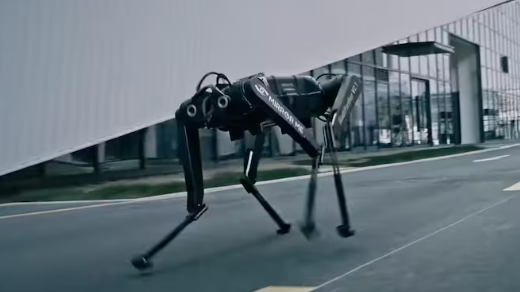Black Panther 2.0: Meet the Robotic Dog Outpacing Humans
- Lemina
- Jan 17
- 2 min read
In a groundbreaking development in the field of robotics, a new creation known as Black Panther 2.0 is making waves for its incredible ability to sprint faster than human athletes. This robotic dog, developed by cutting-edge engineers and scientists, is designed to push the boundaries of speed, agility, and technology, bringing forth a new era of robotics and performance enhancement.

Key Features of Black Panther 2.0:
Unmatched Speed and AgilityBlack Panther 2.0 is engineered for speed, capable of running faster than most elite human athletes. With advanced motors and algorithms, the robotic dog has been designed to maximize efficiency in its movements, allowing it to reach top speeds previously thought unattainable for robotic machines. Its streamlined body and powerful limbs help it reach speeds that rival some of the world’s fastest runners.
Human-Like MovementUnlike traditional robots that often struggle with natural movements, Black Panther 2.0 is built to mimic the fluid motion of an animal, making it appear almost lifelike. It has the ability to navigate complex terrains, sprint at high speeds, and change direction quickly—traits that make it highly versatile and efficient in various environments.
Revolutionizing Robotics and PerformanceBlack Panther 2.0 is not just about speed; it represents a significant leap in robotics, demonstrating how machines can adapt to real-world challenges. Its creation has the potential to influence a wide range of industries, including sports science, rescue operations, and military applications. The robotic dog’s impressive performance could also lead to innovations in enhancing human athletic performance, serving as a testing platform for future bio-mechanical advancements.
Applications Beyond SpeedWhile the primary showcase of Black Panther 2.0 has been its sprinting ability, its potential uses go far beyond just racing. This robotic dog could be deployed in various applications where human-like mobility and speed are required. For instance, in search-and-rescue missions, Black Panther 2.0 could navigate hazardous terrains faster than human teams, locating victims in record time. Additionally, it could be adapted for use in military operations, logistics, and exploration of remote or dangerous locations.
The Future of Robotics and AIWith AI and robotics advancing rapidly, Black Panther 2.0 offers a glimpse into a future where robots are not only faster than humans but also more adaptable and capable of performing tasks that require agility and precision. Its development signals the potential for more autonomous machines in various industries, raising both excitement and concerns about the role of robots in our everyday lives.
Conclusion: A Step Toward the Future of Robotics
Black Panther 2.0 stands as a testament to the incredible advancements being made in robotics and artificial intelligence. Its ability to outrun human athletes and its potential for real-world applications make it an exciting leap in technological innovation. As engineers continue to refine its capabilities, Black Panther 2.0 could revolutionize the way we think about robots, challenging our perceptions of speed, movement, and performance.







Comments